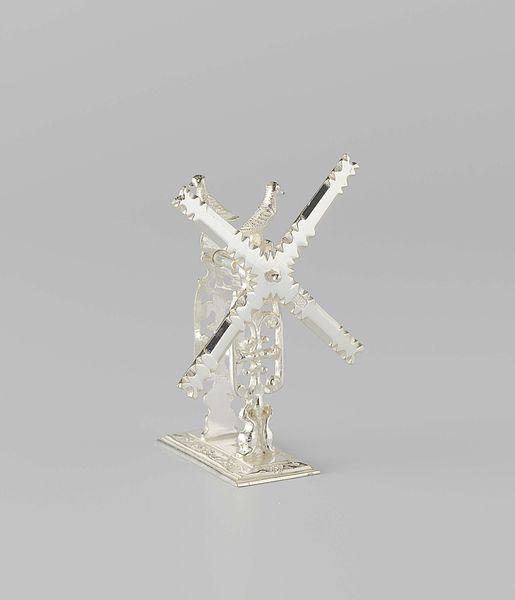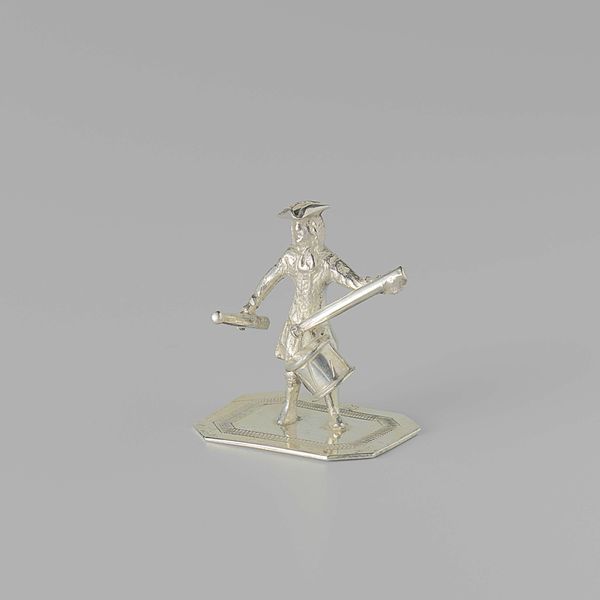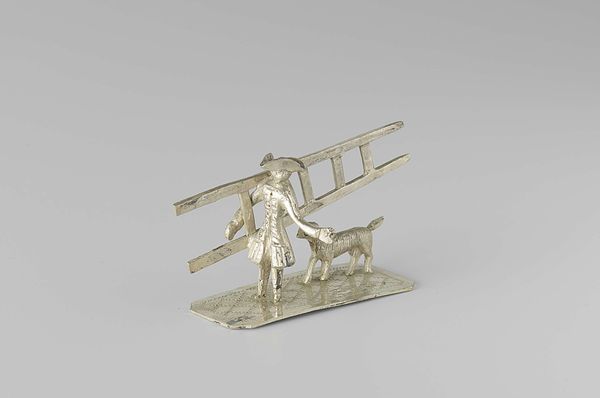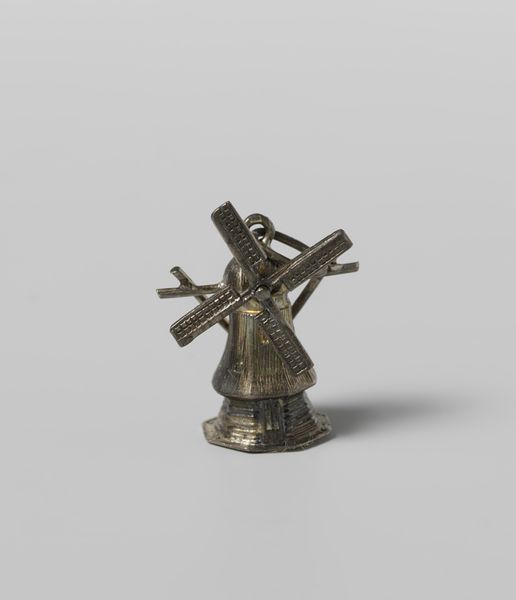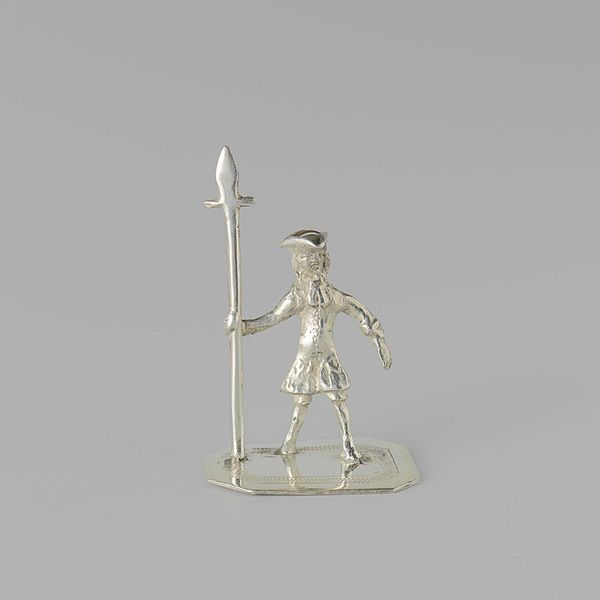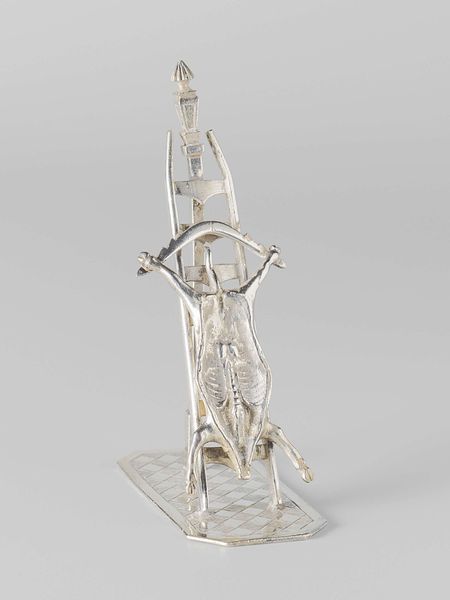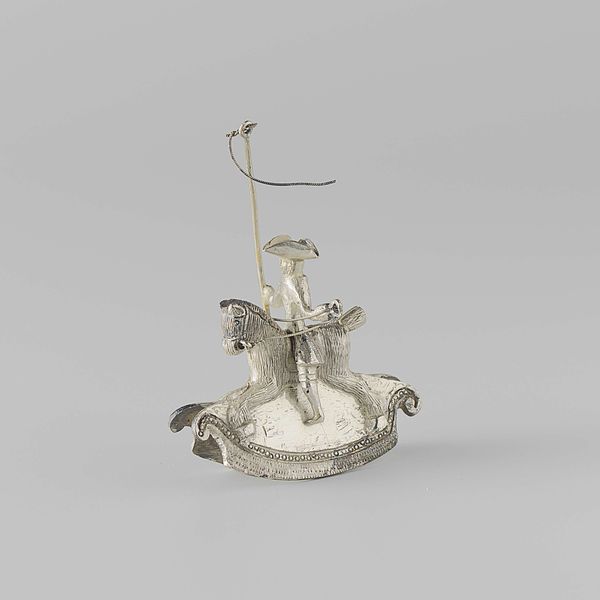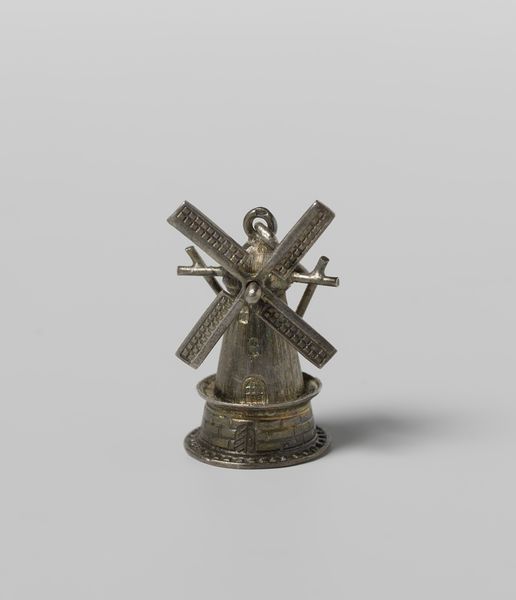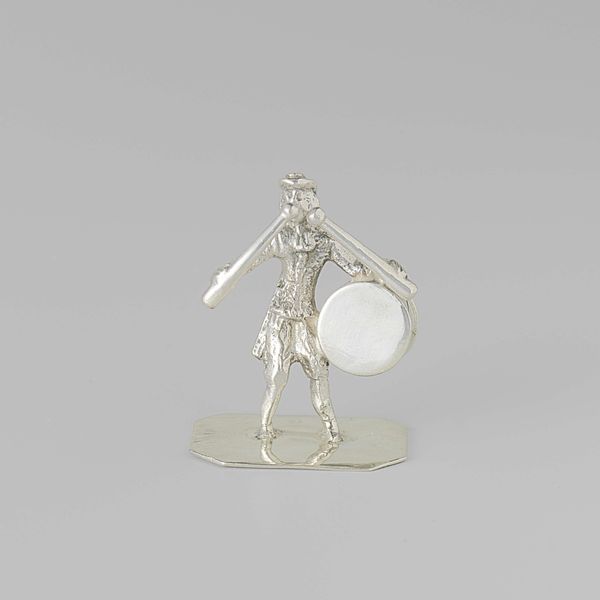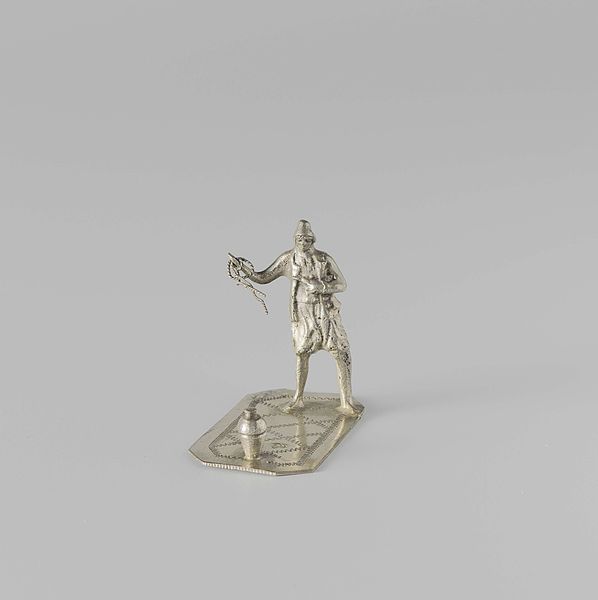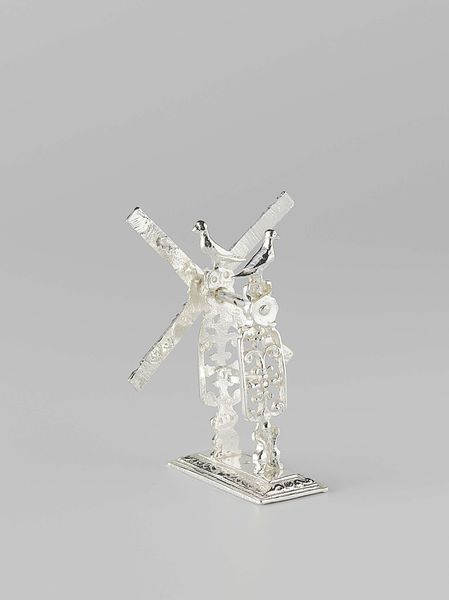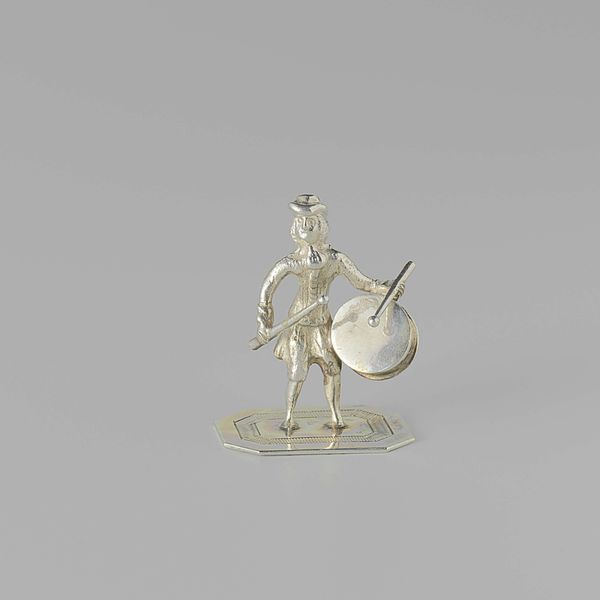
metal, sculpture
#
baroque
#
dutch-golden-age
#
metal
#
sculpture
Dimensions: height 7.2 cm, width 3.7 cm, depth 2 cm
Copyright: Rijks Museum: Open Domain
Curator: This striking piece is a metal sculpture titled "Three Windmills for Drawing Water," created around 1760 by Johannes van Somerwil. Editor: It's wonderfully delicate, and almost ethereal. The metallic sheen against the minimalist background projects such an overwhelming airiness, and maybe, aspiration. It feels lighter than its material should allow. Curator: Precisely. Notice the meticulously crafted, ornamental framework of the mill structure itself. The linear patterns of the design guide the eyes to ascend, echoing its purported purpose in the title. Editor: And what is striking to me is the almost ironic luxury. To construct something functional like a windmill from precious metal shifts its context entirely. Was this created as an expression of elite status, or perhaps as an acknowledgement of the societal relevance that windmills served in their landscape? Curator: Absolutely a valid interpretation. Looking at its Dutch Golden Age and Baroque influences, it highlights a societal shift. A move away from religious paintings to honor agriculture that provided commercial opportunities for this landscape, perhaps. Notice how each carefully wrought curve plays with shadow and light, enhancing the visual interest and speaking to broader notions of value in eighteenth-century Dutch society. Editor: What of the placement of the two birds at its crest? Are we meant to understand a message of natural resources now at the advantage of humans due to agricultural interventions? Curator: They could symbolize prosperity, nature harmonizing with human ingenuity, and the fruits it provides in its reflection back into the populace, maybe even a symbolic peace in a golden era of development. The placement atop the functional part may invite meditation on their interwoven relationships, both material and conceptual. Editor: I'm left pondering how such an intricate item embodies the dichotomy of artistic embellishment and historical commentary. It is fascinating to explore. Curator: Indeed, this piece encourages a rich discourse that speaks volumes through both its inherent features and wider historical resonances.
Comments
rijksmuseum about 2 years ago
⋮
Some types of miniature continued to be produced for ages. One such ‘evergreen’ subject was the windmill placed above a well. These mills used wind power to draw up a bucket of water. While there is more than a century between the earliest and the latest, their form and decoration have remained virtually the same.
Join the conversation
Join millions of artists and users on Artera today and experience the ultimate creative platform.
